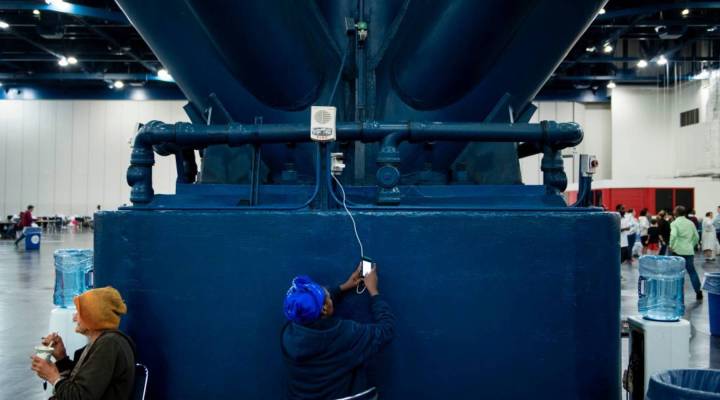
Three ways to optimize tech for an emergency

You’ve got food and supplies. You’ve got your first-aid kit. You’re ready for an emergency situation — except for the digital stuff, because, hey, it’s kind of hard to think about Wi-Fi access when you’re worried about food and shelter, right? But as it turns out, a mobile device can be one of the most important things you bring in an emergency — as long as you know what you can and can’t do with one. Marketplace Tech host Molly Wood explains how to make the most of your digital tool kit when the going gets tough.
1. Keep a digital backup of all crucial documents
In an emergency situation like a flood, digital copies tend to fare a lot better than physical copies. And that means in some cases, it’s a really good idea to save pictures of documents like your passport and insurance policies on your phone.
“It sounds a little scary,” Wood said, “but you want photos of your passports, your Social Security cards, your homeowner’s and renter’s insurance. You definitely want to have photos of those things.”
These pictures can come in handy when applying for disaster relief, as the applications will often require documentation that you own your property.
2. Don’t forget the batteries
As handy as smartphones are, they’re nothing without the juice to power them. Fortunately, there are plenty of easy ways to plan for your power needs.
You want to make sure that you’ve got external battery packs, you want to have some solar-powered or hand-crank chargers, if they’re available,” Wood said.
Depending on the emergency, the greatest battery of all could be your car.
“I highly recommend getting a power-inverter, which is the doohickey that turns your regular cigarette lighter into, you know, a 110-volt wall-charger,” Wood said. “It’s great if it’s got two outlets and a couple of USB ports.”
3. Don’t be so quick to write off apps
Perhaps it seems like too much of a punchline, but yes, there are apps just for emergencies — like the FEMA app.
“The FEMA app actually has a lot of local resources,” Wood said. “And there’s even one called ‘My Family,’ from FEMA that lets you store your family’s health insurance and prescription information so that you don’t have to try to dig for it in some box or file folder.”
Apps can also function as a go-around in case cell service goes down.
“There are also places where you might have Wi-Fi because the landline internet is still working,” Wood said. “And so, you know, make sure that you’ve got a messaging app like WhatsApp, or even Apple’s iMessage, on your phone so that you can … still do messaging that way.”
Finally, don’t write-off social media.
“And, you know, I have to say that things like the Facebook safety check have actually proven really useful for people,” Wood said. “And it’s a great way to just sort of, like, check a box, and let people know — everybody at once — that you’re safe.”
To hear the full interview, use the media player above.
| Barely anyone used text-to-911 during Hurricane Harvey |
| Crowdfunding is playing a larger role in disaster relief |
There’s a lot happening in the world. Through it all, Marketplace is here for you.
You rely on Marketplace to break down the world’s events and tell you how it affects you in a fact-based, approachable way. We rely on your financial support to keep making that possible.
Your donation today powers the independent journalism that you rely on. For just $5/month, you can help sustain Marketplace so we can keep reporting on the things that matter to you.


















